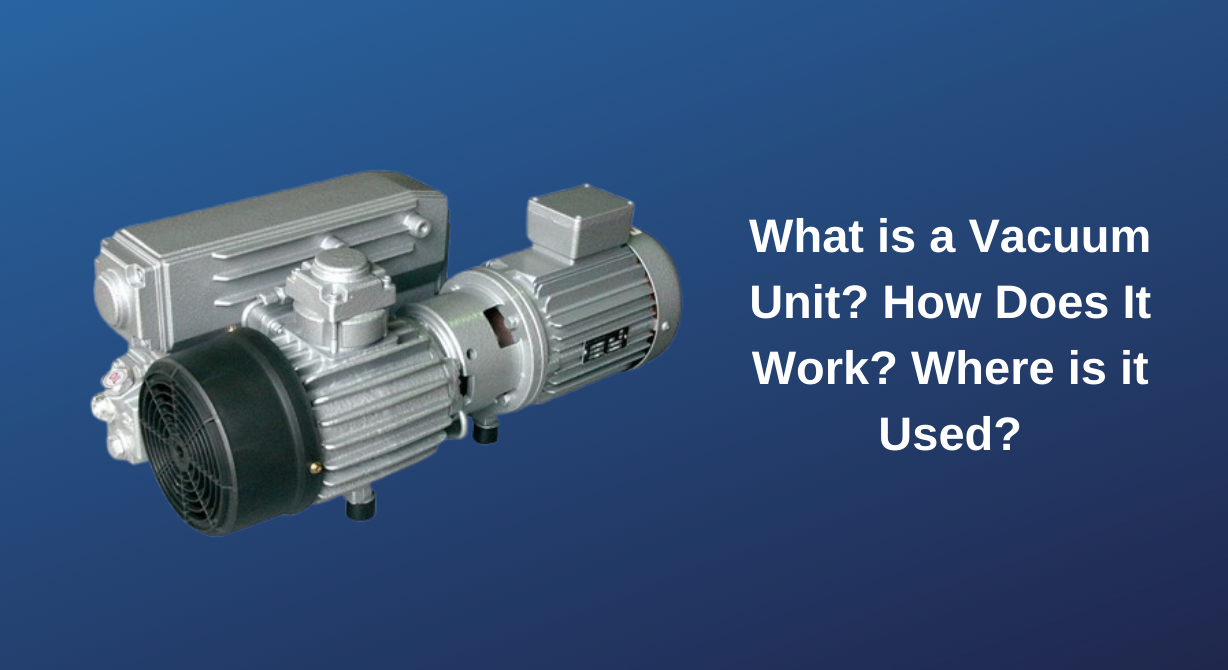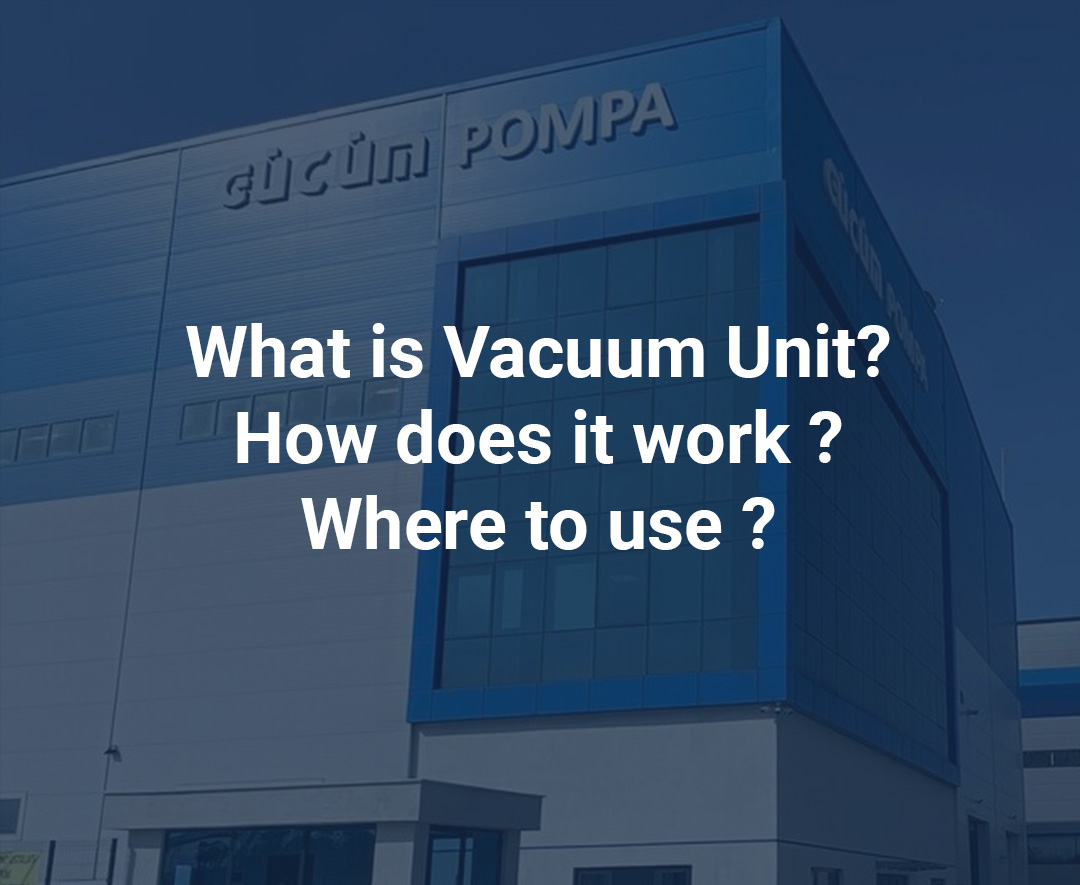What is Vacuum Unit? How does it work ? Where to use ?
Table of Contents
- What is a Vacuum Unit? What are Its Basic Functions and Advantages?
- How Does a Vacuum Unit Work?
- In Which Industries Are Vacuum Units Used?
- What is the Role of Vacuum Units in Businesses?
- How Does It Contribute to Efficiency and Cost Savings?
- What Tips are Recommended for Effective Use?
What is a Vacuum Unit? What are Its Basic Functions and Advantages?
A vacuum unit is a device used in various industries to create a vacuum and perform various processes. Essentially, vacuum units draw air or gas from a chamber, reducing the pressure inside and creating an environment for various processes. The functions of vacuum units are used in various fields such as vacuum packaging, the printing industry, industrial cleaning, vacuum-assisted assembly processes, and medical devices in the healthcare sector.
Among the advantages of these devices are flexibility in processing a wide variety of materials, prevention of deformation due to high temperature or friction during processing, increased precision in process duration, and increased production efficiency. Additionally, vacuum units enable processes to be carried out in a more hygienic and safe manner, while also helping businesses reduce costs by saving energy and labor. These advantages contribute to the widespread preference for vacuum units in industrial applications.

How Does a Vacuum Unit Work?
A vacuum unit is a device that operates by creating a vacuum to perform various processes. Essentially, it draws air or gas from a chamber through a pump inside it, reducing the pressure. As a result, the low-pressure environment created inside provides a suitable environment for various industrial processes.
The working mechanism of vacuum units is accomplished by the movement of a piston or blades inside a vacuum pump (typically rotary piston or vacuum jet pump). This movement reduces the pressure inside the chamber, creating a vacuum. Subsequently, this created vacuum is maintained for a certain period and used for various processes.
For example, vacuum units are used in many fields such as vacuum packaging, printing industry, vacuum-assisted assembly processes, and more. In vacuum packaging, the vacuum unit removes the air inside the package, ensuring tight sealing of the package. In the printing industry, vacuum units assist in the smooth transportation and placement of paper or materials during processing.
As a result, vacuum units are important tools used to perform various industrial processes by creating a vacuum. These devices play an effective role in industrial production processes with their technology and functionality.
In Which Industries Are Vacuum Units Used?
Vacuum units are versatile devices widely used in a wide range of industries. They are commonly used in vacuum packaging processes, especially in the food industry. Additionally, they are widely used in vacuum-assisted assembly processes in the automotive industry, semiconductor production in the electronics industry, production of medical devices in the healthcare sector, and printing processes in the printing industry. Moreover, vacuum units play a significant role in industrial cleaning, material handling systems, and research laboratories. This diversity emphasizes the breadth and importance of vacuum unit applications in industries.
What Is the Role of Vacuum Units in Businesses?
Vacuum units play a significant role in businesses, enhancing productivity across various industrial processes. One of their primary roles in businesses is to increase efficiency and improve product quality in production processes. Vacuum packaging extends the shelf life of products while improving print quality in the printing industry. Additionally, vacuum units enhance product quality and durability in precision operations in the automotive industry and electronic production. Furthermore, vacuum units reduce operating costs by saving energy and labor, and help processes run in a more hygienic and safe manner. Therefore, vacuum units are critical tools for businesses, not only to increase production efficiency but also to reduce costs, providing a competitive advantage.
How Does It Contribute to Efficiency and Cost Savings?
One of the most significant contributions of vacuum units to businesses is enhancing efficiency and providing cost savings. Firstly, vacuum units increase production efficiency by performing faster and more precise operations in industrial processes. This enables production processes to be completed in shorter durations, allowing the business to produce more products. Additionally, vacuum units reduce error rates in operations and improve quality, thereby reducing costs associated with recalls or rework.
In terms of cost savings, vacuum units reduce operating costs by providing energy and labor efficiency. For example, vacuum packaging extends the shelf life of products and reduces waste, thereby lowering costs. Additionally, vacuum units allow for less material usage in production processes or generate less waste, further reducing the business's costs. As a result, the efficiency improvement and cost reduction provided by vacuum units give businesses a competitive advantage and increase profitability.
What Tips are Recommended for Effective Use?
There are some important tips for effectively using vacuum units. Firstly, it's crucial to correctly install and assemble the vacuum unit, ensuring its efficient operation. Secondly, users need to perform regular maintenance on the vacuum unit. Cleaning filters and regularly changing pump oil enhances performance and extends its lifespan. Additionally, proper adjustment of the vacuum unit is essential. Adjusting parameters such as vacuum level and process time correctly prevents unnecessary energy consumption during operation. Lastly, operators should be trained in vacuum unit usage, ensuring its safe and effective utilization. By paying attention to all these tips, vacuum units can be used efficiently.
